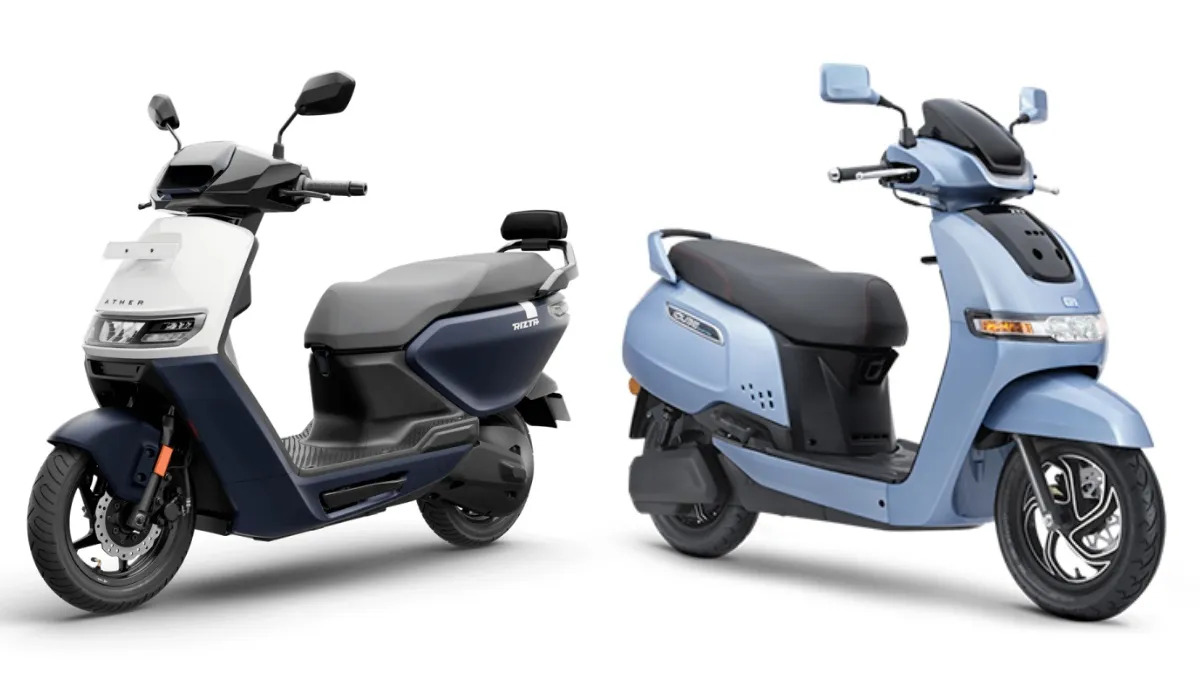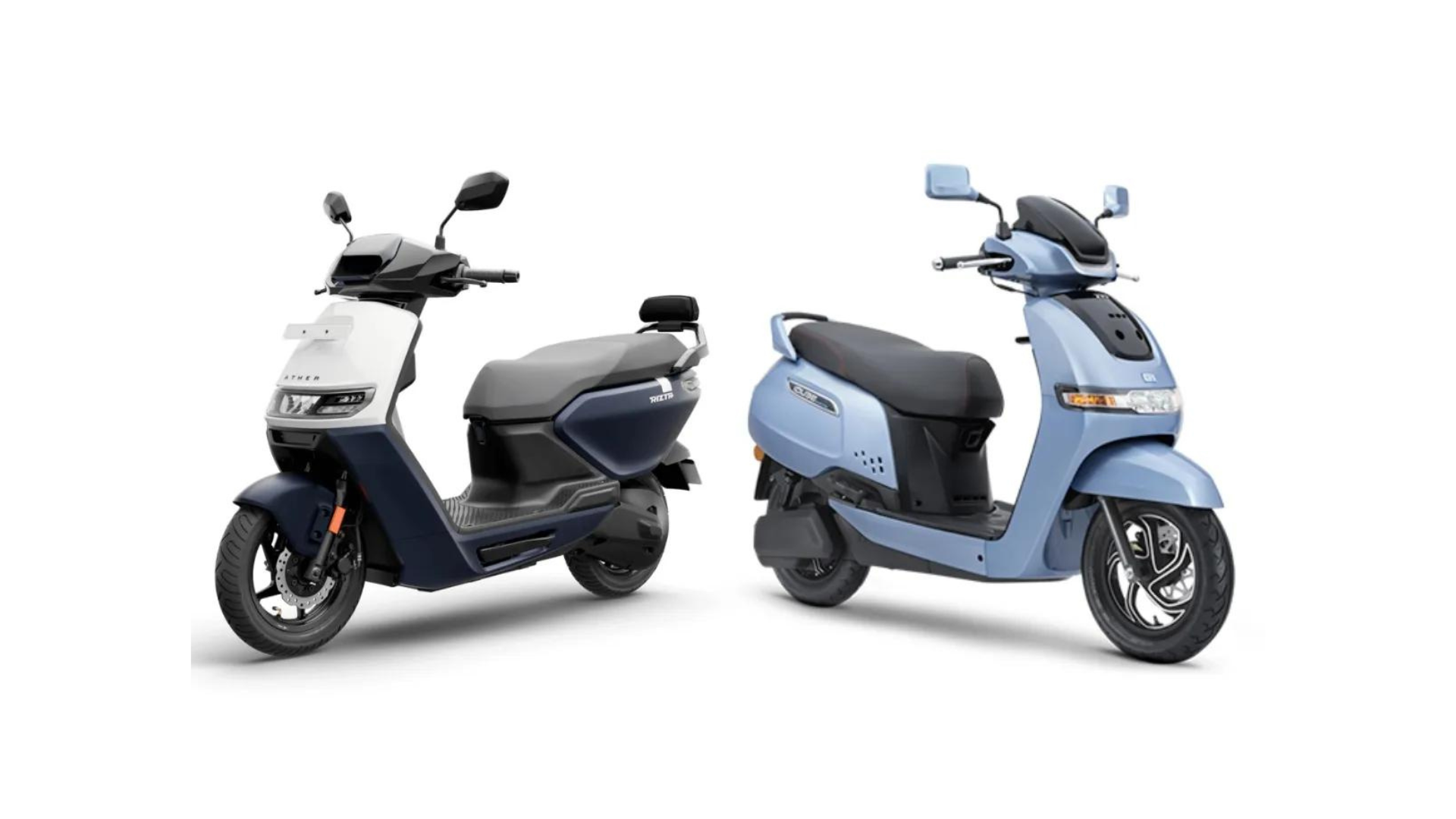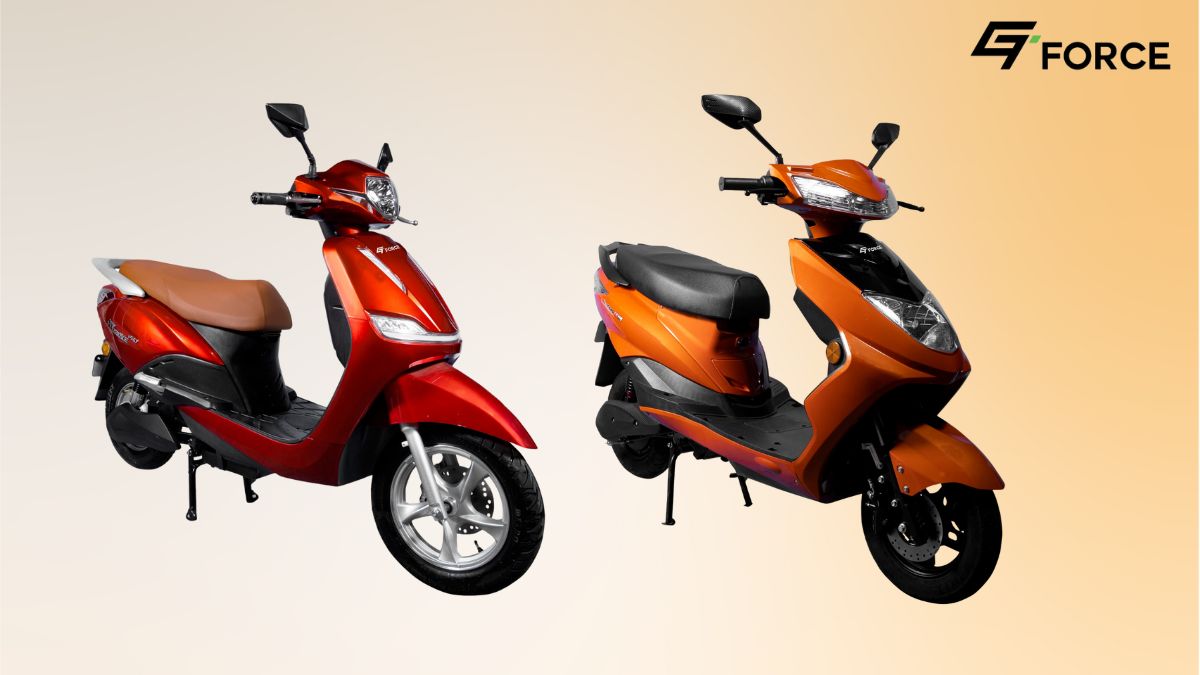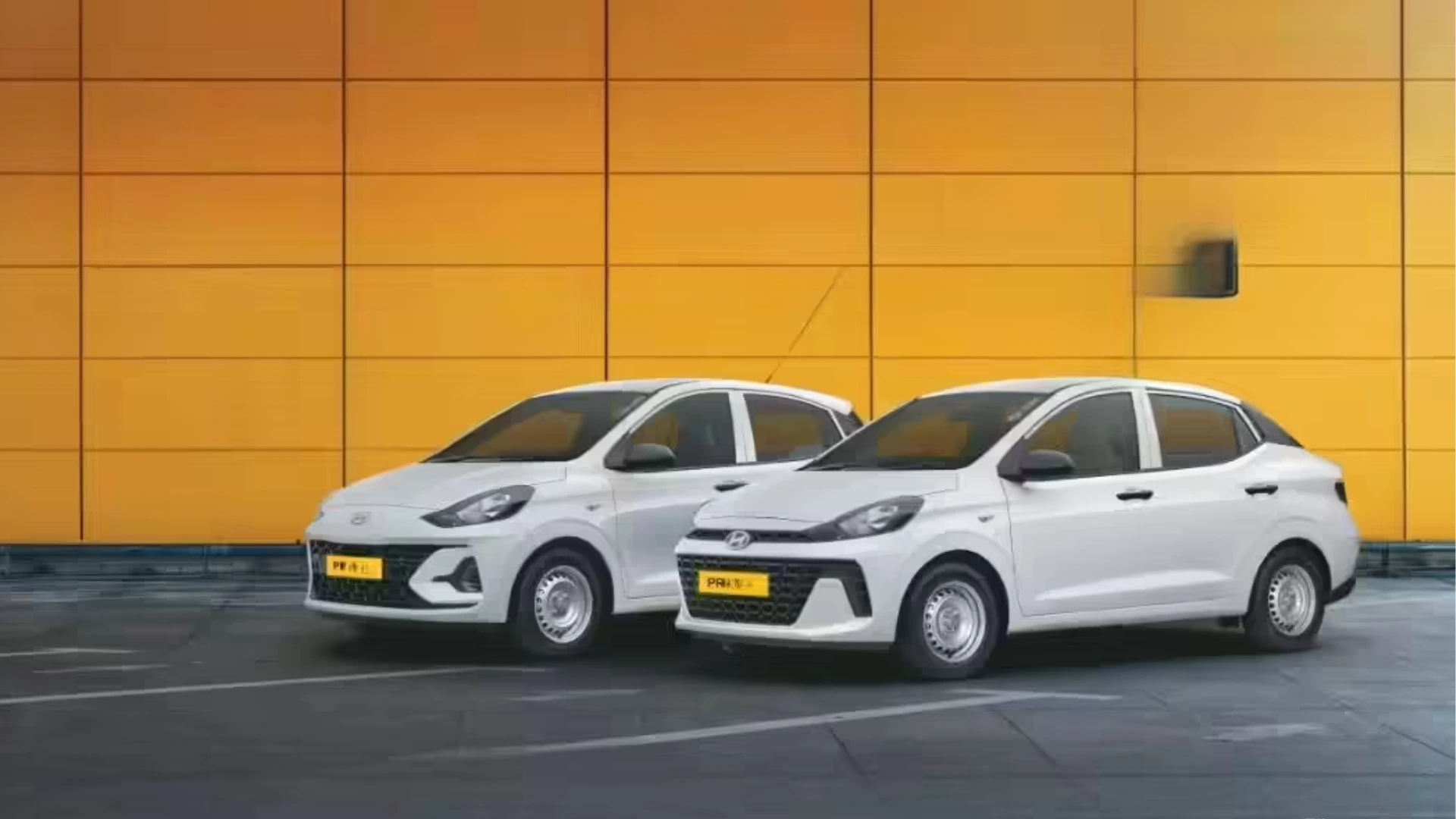TVS has made a significant stride in the electric scooter market with the launch of its flagship model, the TVS iQube ST. With two variants offering distinct battery capacities, range capabilities, and pricing, the TVS iQube ST is set to challenge established players like the Ather Rizta Z. Let's delve deeper into the key aspects of both scooters to understand how they stack up against each other.

Design:
The TVS iQube ST exhibits a sleek and contemporary design language, characterized by its boxy bodywork and apron-mounted LED headlight. It exudes sophistication without compromising on practicality, catering to a mature audience seeking a refined urban commuting experience. On the other hand, the Ather Rizta Z adopts a more family-friendly design approach, featuring a clean and minimalist aesthetic devoid of aggressive styling cues. Both scooters prioritize functionality and usability, appealing to riders seeking practicality and versatility in their daily commute.
Features:
TVS leaves no stone unturned when it comes to equipping the TVS iQube ST with advanced features. From a seven-inch TFT display to turn-by-turn navigation, music control, and over-the-air updates, the iQube ST offers a comprehensive suite of functionalities aimed at enhancing the rider experience. Meanwhile, the Ather Rizta Z boasts a plethora of smart features, including traction control, auto hold, and smartphone connectivity for Google Maps and live traffic data. However, it's worth noting that certain features are available only with the Pro Pack, which incurs an additional cost.
Motor and Battery:
Under the hood, the TVS iQube ST is propelled by a robust 4.4kW BLDC hub motor paired with a 5.1kWh battery pack, delivering an impressive range of 150km on a single charge. In comparison, the Ather Rizta Z is powered by a slightly lower-rated 4.3kW motor mated to a 3.7kWh battery, offering a commendable range of 160km. Despite the minor differences in motor specifications, both scooters deliver comparable performance and efficiency, catering to the diverse needs of urban commuters.

Hardware:
Both scooters feature a sturdy chassis and suspension setup, with telescopic front forks providing optimal ride quality and handling characteristics. While the TVS iQube ST opts for a dual rear shock absorber configuration, the Ather Rizta Z boasts a monoshock rear suspension, enhancing stability and comfort during rides. Additionally, both scooters come equipped with a front disc and rear drum brake setup mounted on 12-inch wheels, ensuring reliable stopping power and control in varying riding conditions.
Price:
The TVS iQube ST commands a premium price tag, with the base variant starting at Rs. 1,85,373 (ex-showroom, Bengaluru). In contrast, the Ather Rizta Z offers a more competitive pricing strategy, priced at Rs. 1,44,999, with an additional Rs. 20,000 for the Pro Pack. Despite the higher base price of the TVS iQube ST, the Ather Rizta Z presents a compelling value proposition, offering similar performance, more features, and better affordability.
While both the TVS iQube ST and Ather Rizta Z stand as formidable contenders in the electric scooter segment, each has its unique strengths and advantages. Whether it's the sophisticated design and comprehensive feature set of the iQube ST or the smart functionalities and competitive pricing of the Ather Rizta Z, urban commuters are spoiled for choice with these top-tier electric scooters. Ultimately, the decision boils down to individual preferences, riding requirements, and budget considerations, as both scooters promise to revolutionize urban mobility with their innovative offerings and cutting-edge technology.
Also Read: GT Force Launches New Lineup of Entry-Level Electric Scooters in India










